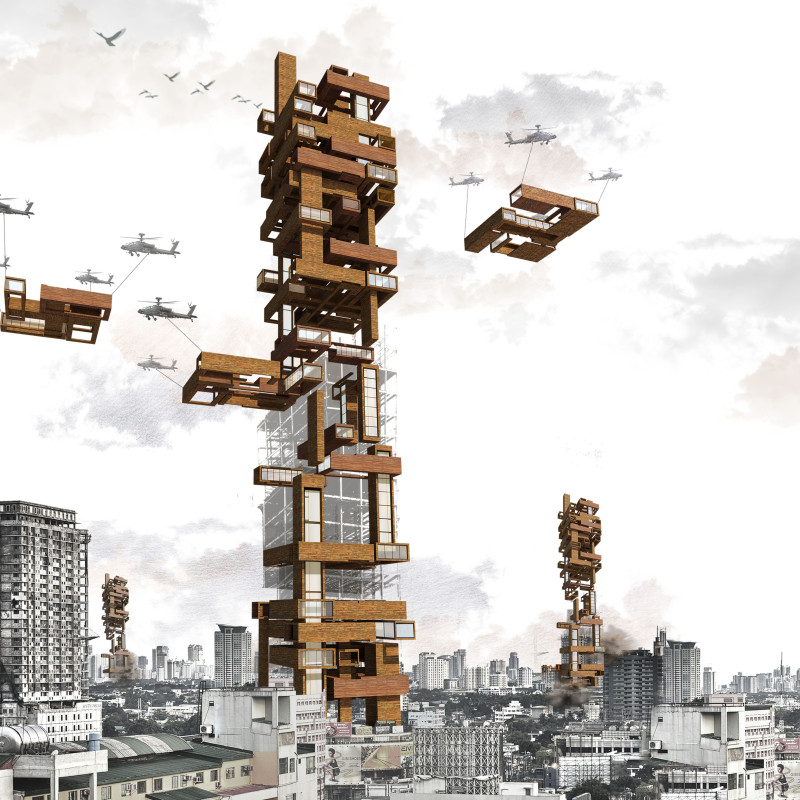5 key facts about this project
The GIBISHOES Convertible Hospital addresses critical healthcare needs in regions affected by conflict, specifically designed for Syria. With a focus on providing rapid medical assistance, the project emphasizes modularity and adaptability to ensure effective healthcare delivery in emergencies. The design prioritizes the swift mobilization of medical resources to support populations in urgent need.
Design Concept
The hospital’s architecture is based on flexibility. The structure can quickly adjust from a vertical format to a horizontal layout as needed. This capability simplifies logistical support and allows for the transport of medical supplies by helicopter, addressing the challenges found in unstable environments. The design is tailored to ensure both immediate healthcare responses and sustained medical services.
Functional Layout
The layout consists of six functional blocks, each serving specific purposes such as emergency treatment, classrooms, recovery areas, and additional mobile channels. This organization improves the efficiency of patient movement and resource management within the facility. By creating a clear spatial structure, the design helps medical staff operate effectively even in high-pressure situations.
Materiality and Construction
The project uses wooden structures, which meet the dynamic needs of the adaptable design. These materials are lightweight, which supports the hospital's ability to change shape while still being strong and durable. Fire prevention materials are included as well, highlighting the importance of safety in regions where conflict can pose rapid risks to well-being.
Community Integration
The GIBISHOES Convertible Hospital serves more than just immediate medical needs. It also includes educational spaces aimed at improving community health awareness. By providing areas for medical training and research, the design plays a dual role—delivering urgent healthcare while promoting long-term health education. This approach can help build resilience within communities impacted by conflict, encouraging local involvement in health initiatives.
The design highlights a modular system that can be transported and set up efficiently. By integrating traditional craftsmanship concepts, the project focuses on effective joint connections that enhance structural stability. This thoughtful inclusion reflects a commitment to both practical innovation and cultural relevance.



























